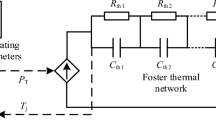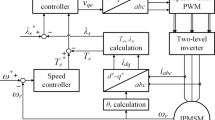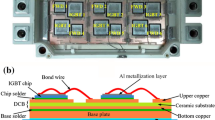Abstract
In most of the power electronic applications like electric and hybrid electric vehicles, renewable energy applications, electric traction, power electronic drives and power grid, Insulated Gate Bipolar Transistors (IGBTs) are playing crucial role. For better efficiency, safe operation and gate drive circuit building for the IGBT, it is required to know the static and dynamic characteristics of the IGBT. The dynamic characteristics totally depend on gate resistance and static characteristics depend on junction temperature, collector to emitter voltage, and the gate voltage. In this paper, the static and dynamic characteristics of IGBT have been analyzed at different temperatures, gate resistances and gate voltages. The value of the gate resistance for IGBT can be estimated according to the power range of the IGBT. The recommended gate resistances, gate voltages, and temperature for the application purpose have been given in this paper. For experimentation purpose, Star Power 600 V, 50 A IGBT power module has been used.
Access provided by Autonomous University of Puebla. Download conference paper PDF
Similar content being viewed by others
Keywords
- Static characterization
- Dynamic characterization
- Gate resistance
- Junction temperature
- Gate voltage
- Saturated voltage
- IGBTs
1 Introduction
Conduction and switching losses are the most significant losses in IGBT for medium and high-power applications. The life cycle of the power device will also be affected by the junction temperature of the IGBT [1]. This information will aid in the development of gate drive circuits and the prevention of avoidable errors in power electronic applications [2, 3]. The dynamic and static properties of the IGBT have been examined in this study and the important information for designing the gate drive circuit and fabricating power electronic equipment has been given [4,5,6,7]. The dynamic behavior of a high-power IGBT module is investigated in this research under various operating situations. In the studies, single pulse tests are utilized to examine the switching way of IGBT and body diodes under a variety of operating situations. A variety of gate-driving approaches for IGBT modules are investigated. Switching transients at different dc-link voltages and junction temperatures are also used to determine the IGBT modules’ switching losses. The static and dynamic analysis of the IGBT has been discussed in depth in Sects. 2 and 3, respectively.
2 Static Analysis
When the IGBT is switched-on, the VCE fluctuates with the IC, VGE, and Tj. In the ON state, the VCE signifies a collector emitter voltage drop that is used to calculate the IGBT's power dissipation loss. The lower the VCE value, the smaller the power dissipation loss [8, 9]. As a result, the VCE value of the IGBT must be as low as possible. The V-I characteristics of the IGBT is shown in Fig. 1.
VGE should be kept at 15 V and collector current should be kept at or below the rated IC current.
2.1 ON State
There are two distinctive curve sections in the forward on mode “VCE” and +ve “IC”.
The turn-on and turn-off characteristics of the IGBT are discussed in [10].
The forward transconductance (gfs) is a measurement of the transfer behavior seen in Fig. 1a.
From above gfs, α, IC \({[g}_{fS} \alpha {I}_{C}]\) decrease as chip temp rises [10]. The active region is only run through during switch-on and switch-off in the mode of the switching that is only permitted for power module’s functioning with numerous IGBT chips linked in parallel. In this region, stationary module operation is not permitted since VGE(th) decreases as the temperature rises. This will cause the instability in temperature in each chip.
Saturation region:
The saturation area which corresponds to the ON-state during switching processes has been reached when the IC is exclusively controlled by the outside circuit. The VCE(sat) of IGBT characterizes the on-state behavior (Fig. 2).
3 Dynamic Analysis of an IGBT Power Module
As the IGBT is so widely used for switching, it's critical to understand both the “turn-on” and “turn-off” switching characteristics in order to calculate “switching-loss”. It's also worth remembering that while determining operating conditions, a variety of factors impact these features. The circuit depicted in Fig. 3a has been used to measure the four switching time parameters, tr, ton, tf, and toff, as illustrated in Fig. 3b.
The structure, internal capacitances, and internal and external resistances of IGBT power modules impact their switching behavior.
Internal resistances and capacitances influence/effects the IGBT's switching behavior. “CGC” is low and near to “CCE” when the IGBT is off. When VGE surpasses the collector-emitter voltage during the on-state, “CGC” quickly increases. Inversion in the enhancing layer directly under the gate regions causes this quick surge (Table 1).
Since the input and reverse transfer capacitance would grow dramatically in a fully switched transistor, this data can only be used to a limited degree to determine switching behavior.
The charging and discharging rates of the parasitic capacitances are determined by gate resistance. This will affect the IGBT's turn-on and turn-off times.
Hard switching:
Hard switching occurs when both “IC” and “VCE” are high for a brief period of time between turn-on and turn-off. This is owing to the fact that a body diode in the load side prevents the current from shutting off as a response of the Lload.
IGBTs, unlike any other type of thyristor, can manage these states of operations without the use of passive snubber/filter circuits because of the “dynamic” junction that forms in the drift area during the switching conditions. However, with an IGBT, a significant portion of energy is dissipated during switching states.
4 Hardware Implementation and Results
Static test is performed on 50 A, 600 V IGBT Power module. In this test, “VCE(SAT)”, VGE(th), Forward Voltage drop of Diode (VF), Collector leakage Current ICES, IGES, and diode (IR) are measured at 25 and 150 °C (Fig. 4).
4.1 Static Analysis
VCE Measurement at 25 and 150 °C: VCE(SAT) measurements for three IGBT Power module samples S1, S2, and S3 are shown in Tables 2 and 3 at 25 °C and 150 °C, respectively. Figures 5 and 6 show the graphical representation of VCE measurements at different gate voltages at 25 °C and 150 °C, respectively.
It is seen from the tables and graphs that when junction temperature rises, so does VCE sat, and vice versa. Furthermore, by lowering the gate voltage, VCE(SAT) will rise. The junction temperature can be managed with the right gate voltage and VCE(SAT). As a result, the power module's life expectancy will be extended.
VGE(th) measurement at 25 and 150 °C: Tables 4 and 5 provide VGE(th) measurements for three IGBT Power module samples S1, S2, and S3 at 25 °C and 150 °C, respectively. Figures 7 and 8 exhibit graphical representations of VGE(th) measurements at various gate voltages at 25 °C and 150 °C, respectively.
The gate-emitter threshold voltage will drop as the temperature rises in the IGBT junction, as shown in the tables and figures above. Breakdown at the gate-emitter junction may occur as a result of this.
VF measurement of body diode at 25 and 150 °C: Tables 6 and 7 show Vf measurements of three IGBT Power module samples S1, S2, and S3 at 25 °C and 150 °C, respectively. Figures 9 and 10 exhibit graphical representations of Vf measurements at various gate voltages at 25 °C and 150 °C, respectively.
The VF drop of the body diode has increased as the junction temperature (Tj) increases.
ICE measurement at 25 and 150 °C: ICES measurements for three IGBT Power module samples S1, S2, and S3 are shown in Tables 8 and 9 at 25 °C and 150 °C, respectively.
ICE measurement at 25 and 150 °C: IGES measurements for three IGBT Power module samples S1, S2, and S3 are shown in Table 10 and Table 11 at 25 °C and 150 °C, respectively.
According to the static analysis, the gate voltage and junction temperature have an impact on the performance of IGBT. For example, lowering the gate voltage raises the junction temperature, which raises the leakage current and the voltage. The gate's threshold voltage is reduced as the junction temperature rises.
4.2 Dynamic Analysis
Dynamic analysis was performed in three different gate resistances of 3.5, 12, and 22 Ω, as well as at 25 and 125 °C (Figs. 11, 12, 13 and 14).
From the dynamic analysis, it is seen that the switch-on time, switch-off time, and blanking time are all determined by the Rg of the IGBT. From Tables 12 and 13, it is found that when gate resistance is low, the IGBT's on and off times are shorter. The IGBT takes longer time to switch on and off when the gate resistance is large. When gate resistance is high, charging and discharging of CG is slow; when gate resistance is low, charging and discharging of CG is quick. When gate resistance is low, the voltage and current fluctuations with respect to time are greater, and when gate resistance is more, the voltage and current variations with respect to time are less. From Tables 12 and 13, it is understood that the value of the gate resistance is having impact on peak current, peak voltage, and reverse recovery characteristics of the IGBT.
The dynamic test was carried out at two distinct temperatures (25 and 125 °C). The energy loss is greater when the ambient temperature reaches 125 °C according to the test. The reverse recovery time is influenced by the ambient temperature. When the ambient temperature is higher, the reverse recovery period is longer.
5 Performance Analysis with Respect to Speed
The efficiency of electric drives is entirely dependent on the motor's speed and torque. When the drive operates at low speed and torque, the efficiency is reduced. Table 14 shows a comprehensive study of the drive at various speeds and torques. It is found that raising the speed and torque till the rated values increases the efficiency of the drive.
6 Conclusion
The influence of the gate resistance on circuit characteristics is first examined in this study. Based on the discussions, some recommended resistor values have been determined for various applications, which can be used as a starting point for optimization. In any case, the final value is utilized to test the circuit in concern. Simultaneously, an example on how to pick appropriate drive modules for the determined Rg value is shown. Finally, several circuit layout methodologies and concepts have been discussed in brief. Total losses are minimized by maintaining the optimum saturation voltage across the collector and the emitter and the rated gate voltages. This information might be useful to the circuit designers. The junction temperature, gate voltage, and gate resistance should all be kept within a certain range for improved IGBT performance, as stated in this work.
References
N. Chen, F. Chimento, M. Nawaz, L. Wang, dynamic characterization of parallel connected high power IGBT modules. IEEE Trans. Ind. Appl. 51(1) (2015)
Y. Gao, A.Q. Huang, S. Krishnaswami, A.K. Agarwal, Comparison of static and switching characteristics of 1200 V 4H-SiC BJT & 1200 V Si-IGBT. IEEE Trans. Ind. Appl. 44(3) (2008)
R. Alvarez, F. Filsecker, S. Bernet, Characterization of a new press pack SPT + IGBT for medium voltage converters, in Proceedings of the IEEE ECCE (2009), pp. 3954–3962
R. Letor, Static & dynamic behavior of paralleled IGBT’s. IEEE Trans. Ind. Appl. 28(2) (1992)
K. Zou, L. Qi, X. Cui, G. Zhao, B. Zong, The design & measurement of test system for dynamic characteristics of IGBT, in 2014 International Conference on Power Systems Technology (POWERCON 2014), Chengdu, 20–22 Oct. 2014 (2014)
S.-W. Hu, Y.-J. Zhu, Y.-Y. Duan, An impact analysis of gate Rg on static and dynamic dissipation of IGBT modules, in IEEE Conference (2011). 978-1-4577-0321-8/11
C. Wang, Y. He, C. Wang, L. Li, J. Li, X. Wu, Multi-chip parallel IGBT power module failure monitoring based on gate dynamic characteristics, in IEEE Conference (2020). 978-1-281-5281-3/20
A. Arya, P. Kumar, S. Anand, Methodology of an accurate static I–V characterization of power semiconductor devices. IEEE Trans. Instrum. Meas. 69(10) (2020)
Z. Wang, H. Zhang, J.B. Kuo, Turn-off transient analysis of super junction IGBT. IEEE Trans. Electron. Devices 66(2) (2019)
B. W. Williams, Power Electronics
Author information
Authors and Affiliations
Corresponding author
Editor information
Editors and Affiliations
Rights and permissions
Copyright information
© 2023 The Author(s), under exclusive license to Springer Nature Singapore Pte Ltd.
About this paper
Cite this paper
Bharathsimha Reddy, A., Mahato, S.N., Tewari, N. (2023). Static and Dynamic Analysis of IGBT Power Modules for Low and High-Power Range Electric Drives. In: Kumar, S., Singh, B., Sood, V.K. (eds) Recent Advances in Power Electronics and Drives. Lecture Notes in Electrical Engineering, vol 973. Springer, Singapore. https://doi.org/10.1007/978-981-19-7728-2_9
Download citation
DOI: https://doi.org/10.1007/978-981-19-7728-2_9
Published:
Publisher Name: Springer, Singapore
Print ISBN: 978-981-19-7727-5
Online ISBN: 978-981-19-7728-2
eBook Packages: EnergyEnergy (R0)


















